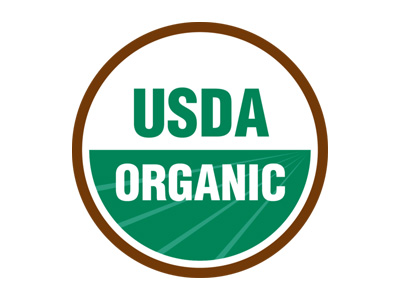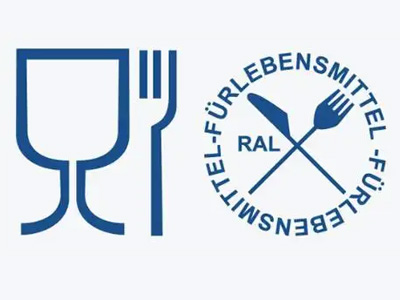On May 3, 2010, the U.S. Food and Drug Administration (FDA) responded to a petition submitted by the Environmental Defense Fund to “ban titanium dioxide as a color additive in food” and launched a 2-month opinion solicitation on whether to ban titanium dioxide. As soon as this news came out, it caused concern in the industry.
Prior to this, the European Union has completely banned titanium dioxide as a food additive in 2022. So, why is titanium dioxide “blocked”?
What is titanium dioxide?
Titanium dioxide is a white solid or powdered inorganic substance, stable in nature, with opacity and excellent whiteness, brightness performance, is considered to be the best white pigment.
Titanium dioxide is a common food additive in the food industry (known as E171 when used as food coloring). As an artificial color, it often appears in jam, chocolate, prunes, jelly, puffed food and other foods, and has been used for more than 50 years. In China, titanium dioxide is also allowed to use food colorant, and is the only permitted white colorant.
According to China’s food safety regulations, the most important function of titanium dioxide as a food additive is to give some food color, that is, to have a whitening effect.
In addition to being widely used in the food industry, it is often used in daily necessities (such as masks, cosmetics, etc.), pharmaceuticals, and chemical fields.
So why is this food additive, which has a history of application for many years, “banned”?
Potential risk
In 2019, the University of Sydney published the results of a study on the safety of titanium dioxide, and found that eating food containing E171 will have an impact on the gut microbiota, which may trigger diseases such as inflammatory bowel disease and colorectal cancer.
In May 2021, a study by the European Food Safety Authority (EFSA) conclusively concluded that titanium dioxide should no longer be considered a safe food additive, citing its ability to damage human DNA. Professor Maged Younes, Chair of EFSA’s Expert Group on Food Additives and Flavorings (FAF), believes that we cannot rule out genotoxicity (i.e. the ability of the chemical to damage the genetic material of cells) after consuming titanium dioxide particles.
In October 2021, EU member states voted to agree that a six-month phase-out period will begin in early 2022, culminating in a ban on titanium dioxide in food. Food manufacturers have until August 2022 to change their formulations and processes. The EU’s move has brought global attention to the safety of titanium dioxide, and countries such as Switzerland and Saudi Arabia have also kicked it off the list of food additives.
The Environmental Defense Fund applicant claims that the intended use of the colorant no longer meets the definition of “safe” in 21 CFR 70.3(i), And referencing the European Food Safety Authority (EFSA) opinion entitled “Safety Assessment of Titanium Dioxide (E171) as a food Additive” published in May 2021, the process for issuing, amending or repealing regulations under Section 721(d) of the Federal Food, Drug and Cosmetic Act FD&C, The petition, filed by the Environmental Defense Fund, calls for the regulation to repeal Section 21 CFR 73.575 and no longer allow the use of titanium dioxide in food.
Perhaps, in a few years, this food additive will be replaced by other substances?
Country/region food regulatory requirements
European Union
On August 7, 2022, the EU regulation banning titanium dioxide as a food additive came into effect. This means that foods containing titanium dioxide will no longer be approved for production and placed on the EU market.
China
According to China’s “National Standard for Food Safety Standards for the Use of Food Additives” (GB 2760-2014), titanium dioxide can be used as a food colorant, and can be used in processed fruits, processed vegetables, cocoa products, chocolate and chocolate products (including cocoa butter chocolate and products), as well as candy, syrups, seasonings and beverages. Different product categories have different limits.
| Titanium dioxide | CNS code 08.011 |
| INS code 171 | Function colorant |
| Food classification NO. | Food name | Maximum usage/(g/kg) |
|---|---|---|
| 04.01.02.05 | Jam | 5.0 |
| 04.01.02.08.02 | Cool Fruit | 10.0 |
| 04.01.02.08.04 | Verbalization | 10.0 |
| 04.02.02.02 | Dried Vegetables (dehydrated potatoes only) | 0.5 |
| 04.05.02.01 | Cooked nuts and seeds (fried nuts and seeds only) | 10.0 |
| 05.01 | Cocoa products, chocolate and chocolate products, including chocolate and chocolate products in cocoa butter substitute | 2.0 |
| 05.02.01 | Gum-based Candy | 5.0 |
| 05.02.02 | Candies other than gum-based candies | 10.0 |
| 05.03 | Candy and chocolate products are coated | Appropriate use according to production needs |
| 05.04 | Decorate candy (such as craft molding, or for cake decoration) toppers (non-fruit materials) and sweet juices | 5.0 |
| 11.05 | Flavored syrup | 5.0 |
| 12.10.02.01 | Mayonnaise, salad dressing | 0.5 |
| 14.06 | Solid drink | Appropriate use according to production needs |
| 16.01 | jelly | 10.0 |
| 16.06 | Puffed food | 10.0 |
| 16.07 | Other (beverage turbidity agent only) | 10.0g/L |
| 16.07 | Others (Konjac gel products only) | 2.5 |
USA
The FDA listed titanium dioxide as a color exempt from certification, and did not specify the specific food categories to be used, and the uniform limit of use is 1%. May 23 proposed banning it as a food additive.
Codex Alimentarius Commission (CAC)
The CXS 192-1995 General Codex Standard for Food Additives lists titanium dioxide as a food additive in the GMP list, except for the foods listed in the appendix of Table 3, other foods can use titanium dioxide in accordance with GMP.
Australia & New Zealand Banking Group
Titanium dioxide is approved for use in various food categories such as candy decorations and candy coatings in accordance with GMP.
In Schedule 15 of the Codex Food Standards, Substances that may be used as food Additives, Titanium dioxide can be used in colorant preparations, dairy products, edible oils and oil emulsions, ice cream and edible ice, processed fruits and vegetables, confectionery, cereals and their products, bakery products, meat products, aquatic products, sweeteners, condiments, beverages, meal replacement formula and supplementary formula foods, sports aid formula foods, food for special medical purposes and other products. These products are used in accordance with GMP.
Japan
Titanium dioxide is approved as a colorant without specifying the scope of application and the amount of use.
Canada
List of food additives “Table 3 List of Permitted colorants”, titanium dioxide can be used in jam, bread, butter, concentrated juice, caviar (caviar); Ice cream mixes, frosting, liqueur, dairy products, jelly, aquatic products, etc. are used in accordance with GMP in these products.
Although most countries currently allow the addition of titanium dioxide to food, given that the European Union and the United States are banning it, it is unclear whether other countries will modify the use of requirements, and Merieux Nutrition will continue to watch to provide you with first-hand information.
Inspection service
The uncertainty of titanium dioxide as a food additive in the future is very high, and several cases of titanium dioxide in sweets imported from China to Europe have been reported in 23 years.
It is recommended that food enterprises take precautions, pay attention to changes in regulations, and adjust product formulations in time.
According to your needs, Merieaus Nutrition Science (China) laboratory can provide you with a variety of food (such as sauce, candy, chocolate and its products, salad dressing, etc.) titanium dioxide testing services, to help you cope with European and American regulatory changes, control product quality.
Test item: titanium dioxide
Test method: GB 5009.246-2016 National standard for food safety – Determination of titanium dioxide in food – diantipyrine methane colorimetric method


